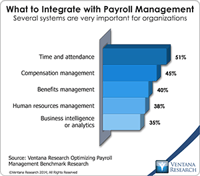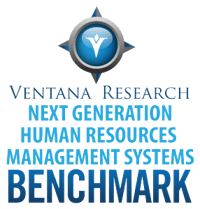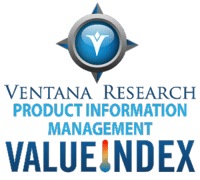Historically workforce management has been centered on tracking time and attendance, absences and leaves. Organizations view the time and attendance system as the top priority to integrate with the payroll system; in our payroll management benchmark research half (51%) of organizations called it very important. However, only one in five have integrated the two to streamline processes. So limited an administrative and operational focus does not contribute to improving worker productivity or...
Read More
Topics:
Big Data,
Human Capital,
Human Capital Management,
Operational Performance Management (OPM),
Business Analytics,
Business Collaboration,
Cloud Computing,
Governance, Risk & Compliance (GRC),
Business Performance Management (BPM),
Financial Performance Management (FPM),
HR,
Risk & Compliance (GRC),
Workforce Management
Ventana Research defines a human resources management system (HRMS) as the set of applications and associated processes that store and manage the employee information used by an organization’s human resources department. New technologies make it possible for the HRMS to perform better and be easier to use by HR professionals and members of the workforce. The range of evolving technologies impacting the development of the HRMS include business analytics, big data, cloud computing, mobile...
Read More
Topics:
Big Data,
Social Media,
Human Capital,
Human Capital Management,
Operational Performance Management (OPM),
Business Collaboration,
Cloud Computing,
Business Performance Management (BPM),
HR,
HRMS
Ventana Research defines product information management (PIM) as the practice of using information, applications and other technology to effectively support product-related processes across the customer, commerce and supply chain. As organizations increase the number and diversity of products and services they offer to customers and partners, they increasingly need to address limitations in the ways they manage and distribute product information, including related attributes and content that...
Read More
Topics:
Big Data,
Master Data Management,
Governance,
Marketing,
Operational Performance Management (OPM),
CIO,
Business Performance Management (BPM),
Financial Performance Management (FPM),
Information Management (IM),
Information Optimization,
Product Information Management,
Sales Performance Management (SPM),
Supply Chain Performance Management (SCPM)
The importance of product information management (PIM) has become clear in recent years and especially as it relates to master data management. As I recently wrote handling this business process effectively and using capable software should be priorities for any organization in marketing and selling its products and services but also interconnecting the distributed supply chain. Our research on product information management can help organizations save time and resources in efforts to ensure...
Read More
Topics:
Big Data,
Master Data Management,
Enterworks,
Operational Performance Management (OPM),
Stibo Systems,
Webon,
CIO,
IBM,
Informatica,
Oracle,
Business Performance Management (BPM),
Financial Performance Management (FPM),
Information Management (IM),
Information Optimization,
Product Information Management,
Riversand,
Sales Performance Management (SPM),
Supply Chain Performance Management (SCPM)













